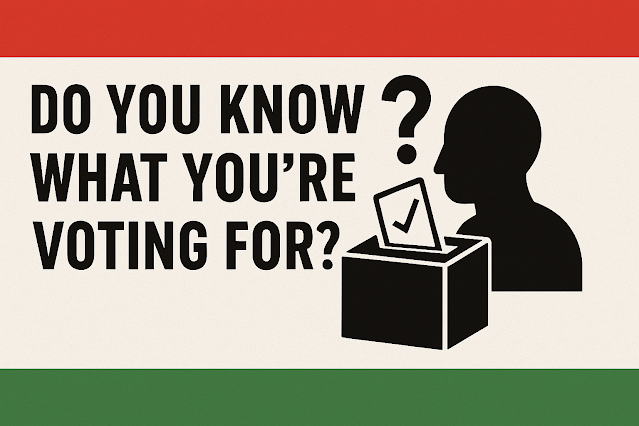By J. André Faust (April 11, 2025)
Do You Know What You’re Voting For?
From countless discussions I’ve had — both in public and on social media — one thing continues to surprise me: when I ask people, "What is the political philosophy or ideology of the party you're supporting?", most don’t answer the question directly. Some go off-topic entirely. Another common trend is that many people don’t fully understand how Canada’s parliamentary system works.
This blog is split into two parts:
- Part One: A summary of how the Canadian parliamentary system functions, including the role of the Prime Minister, Ministers, and the Senate.
- Part Two: A brief overview of the core philosophies and ideologies of Canada’s major federal political parties.
With the ongoing damage to the Canadian economy stemming from Donald Trump’s actions — especially in areas like trade and tariffs — I believe the upcoming Canadian federal election may be the most important since Confederation in 1867. Understanding the political ideology behind each party is crucial. This blog is meant to serve as a primer — a starting point. I encourage readers to seek out additional information on parliamentary procedure and party platforms.
Part One: The Canadian Parliamentary System — In a Nutshell
How Bills Are Introduced
In Canada’s Westminster-style parliamentary system, legislation is almost always introduced by Cabinet ministers, not the Prime Minister personally. Here’s a breakdown:
- Government Bills: Introduced by ministers responsible for specific portfolios (e.g., the Finance Minister introduces budget bills).
- Prime Minister’s Role: Sets the overall policy direction and can instruct ministers to pursue certain legislation, but rarely introduces bills personally.
- Private Members’ Bills: Any MP not in Cabinet — including backbenchers and opposition members — can introduce these.
Summary:
- ✔ Bills typically come from ministers who hold portfolios
- ✔ The PM sets the agenda but usually doesn’t table bills directly
- ✔ Even during high-profile moments, a minister usually does the formal tabling
Parliamentary Procedure & Accountability
- ✔ Cabinet ministers are responsible for legislation in their areas.
- ✔ The PM is “first among equals” in Cabinet, not a presidential-style ruler.
- ✔ Decisions are made through Cabinet consensus.
- ✔ All legislation must pass a majority vote in the House of Commons.
When people say, “The Prime Minister passed this law,” it’s more accurate to say:
“The government introduced the bill, the House passed it, and the Prime Minister supported it.”
Does the Prime Minister Vote?
Yes. The Prime Minister is an elected MP, just like all other members of the House of Commons.
- ✔ For example, Justin Trudeau represents Papineau (Quebec).
- ✔ The PM has one vote like any other MP.
- ✔ However, their vote signals the party’s stance and carries weight within the caucus.
Strategic powers of the PM include:
- Appointing and managing Cabinet
- Setting the legislative agenda
- Disciplining MPs or removing them from caucus
- Requesting dissolution of Parliament and calling an election
🏛️ What Does the Senate Do?
The Senate plays a vital role in Canada's democratic system:
- Legislative Review
Reviews bills passed by the House for accuracy, fairness, and unintended consequences — hence the term “sober second thought.” - Amendments
Can propose changes to bills, which must be accepted by the House of Commons to proceed. - Initiating Legislation
Senators can introduce bills, but not those related to taxation or government spending. - Regional Representation
Senators represent provinces and regions to help balance national decision-making.
Part Two: Federal Party Ideologies – What They Stand For
Understanding what each party stands for is critical to informed voting. Here’s a simplified breakdown of the main parties and their philosophical underpinnings:
Ideology: Liberalism, Social Liberalism, Centrism
Core Philosophy: Balances free-market economics with progressive social policies.
Typical Policies: Climate action, multiculturalism, LGBTQ+ rights, public healthcare, moderate taxation.
Ideology: Conservatism, Fiscal Conservatism, Right-leaning Populism
Core Philosophy: Advocates free-market capitalism, small government, and traditional values.
Typical Policies: Lower taxes, oil and gas development, tough-on-crime, anti-carbon tax rhetoric.
Ideology: Democratic Socialism, Progressivism
Core Philosophy: Focuses on reducing economic inequality through public programs.
Typical Policies: National pharmacare, housing initiatives, union support, taxing the wealthy.
Ideology: Environmentalism, Social Justice
Core Philosophy: Places environmental sustainability at the center of all policy.
Typical Policies: Climate response, green energy, livable income, Indigenous rights.
Ideology: Quebec Nationalism, Progressive Values
Core Philosophy: Advocates for Quebec’s autonomy and cultural preservation.
Typical Policies: Protecting French language, Quebec-led immigration policy, Quebec-focused environmental strategies.
Final Thought
Understanding party ideology and parliamentary procedure doesn’t just help you vote — it helps you vote smarter. Our democracy depends on an informed electorate. If we want better outcomes, we need better understanding — not just of people, but of systems.
You don’t need to agree with everything a party stands for — but you should at least know what they stand for.


No comments:
Post a Comment